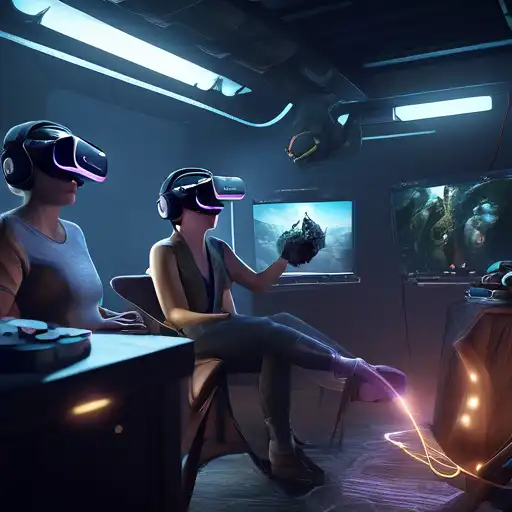Introduction to Virtual Reality
Virtual Reality (VR) has transformed the way we interact with digital content, offering unparalleled immersive experiences. From gaming to education, VR's applications are vast and varied. This guide will walk you through the essentials of creating captivating VR experiences that engage and astonish users.
Understanding VR Technology
Before diving into creation, it's crucial to understand the technology behind VR. VR headsets, such as the Oculus Rift and HTC Vive, provide the visual and auditory foundation, while motion tracking and controllers add interactivity. The goal is to create a seamless blend of hardware and software that transports users to another world.
Designing for Immersion
Immersion is the cornerstone of VR. To achieve this, focus on high-quality graphics, realistic sound design, and intuitive user interfaces. Pay attention to detail; even the smallest elements can break the illusion of reality. Consider the user's perspective and ensure your environment reacts naturally to their actions.
Developing VR Content
Developing VR content requires a combination of creativity and technical skill. Tools like Unity and Unreal Engine are popular choices for VR development, offering robust features and community support. Start with a clear concept, then prototype and test extensively to refine the experience.
Optimizing for Performance
VR applications demand high performance to prevent motion sickness and ensure smooth gameplay. Optimize your assets, reduce latency, and maintain a high frame rate. Testing on various devices is essential to guarantee a consistent experience across all platforms.
Engaging Your Audience
Creating an immersive VR experience is just the beginning. Engaging your audience requires compelling storytelling, interactive elements, and regular updates. Listen to user feedback and be prepared to iterate on your design to keep the experience fresh and exciting.
Future of VR
The future of VR is bright, with advancements in haptic feedback, eye-tracking, and wireless technology pushing the boundaries of what's possible. Staying ahead of these trends will ensure your VR experiences remain at the cutting edge.
For more insights into VR development, check out our guide on VR development tools and tips for optimizing VR performance.
Conclusion
Creating immersive VR experiences is a challenging yet rewarding endeavor. By understanding the technology, focusing on immersion, and engaging your audience, you can craft unforgettable virtual worlds. The key is to keep experimenting and learning as the VR landscape evolves.
